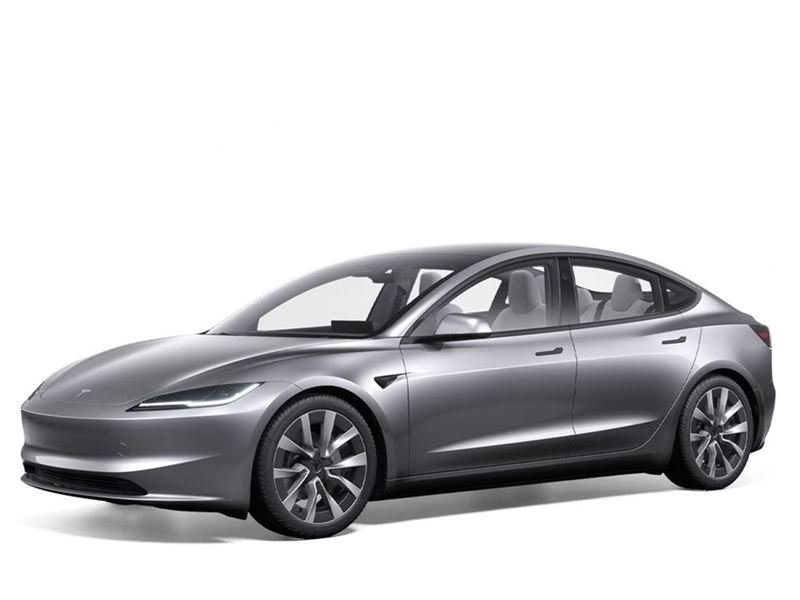Electric vehicles (EVs) are no longer just a niche interest for environmentalists or tech enthusiasts—they’re the future of transportation, and that future is arriving faster than many predicted. With nearly every major automaker pivoting toward electric lineups, governments offering incentives, and the public increasingly concerned about climate change, EVs have entered the mainstream. Yet despite this momentum, myths and misconceptions about electric vehicles continue to circulate, muddying public understanding and creating unnecessary hesitation.
Why does misinformation about EVs persist? Part of it stems from the natural resistance to technological change. Part of it is due to legacy interests—from oil companies to traditional automakers—sowing doubt. But much of it comes from outdated information, hearsay, and fear of the unfamiliar.
This comprehensive article will take you on an electrifying journey to dismantle five of the most pervasive myths about EVs. These are not surface-level rebuttals. We’ll dive deep, examining the origins of each myth, what facts actually say, and how the broader implications affect policy, culture, and the future of mobility.
By the end, you’ll be equipped not only with knowledge but with the clarity to see EVs for what they are: an exciting, transformative leap forward in how we move—and how we think about our impact on the planet.
Myth #1: Electric Vehicles Pollute Just as Much as Gas Cars
At first glance, this myth seems logical. After all, if an electric vehicle (EV) is charged using electricity from coal or natural gas, isn’t it just relocating emissions from the tailpipe to the power plant? And what about the environmental impact of mining materials for EV batteries?
Let’s break it down.
Tailpipe vs. Lifecycle Emissions
The most important distinction to make here is the difference between tailpipe emissions and lifecycle emissions. Gasoline-powered vehicles emit carbon dioxide and other pollutants directly from their tailpipes. EVs, on the other hand, have zero tailpipe emissions.
So critics shift the focus to the lifecycle—claiming that when you account for electricity generation and battery production, EVs are no better, or even worse.
But comprehensive studies—conducted in countries with different energy grids—consistently show that even when powered by fossil fuels, EVs still result in significantly lower greenhouse gas emissions over their lifetimes. That’s because EVs are far more energy-efficient than internal combustion engines (ICEs), converting over 85% of electrical energy into motion, while gas engines convert only about 20%.
The Battery Question
EV battery production does indeed involve energy-intensive processes and raw material extraction. However, this “carbon debt” is repaid relatively quickly—often within the first 1 to 2 years of driving. After that, the environmental advantage only grows.
Moreover, battery production is getting cleaner. As manufacturers adopt greener supply chains, improve battery chemistries, and shift to renewable energy, the emissions associated with production are falling year after year.
The Grid Is Getting Cleaner
One of the most powerful arguments in favor of EVs is that they get cleaner as the grid gets greener. A gas car will always pollute at the same rate. But an EV charged from wind, solar, or hydro power becomes essentially zero-emission transportation.
Already, countries like Norway (nearly 100% hydro-powered grid) and Iceland (geothermal and hydro) are proving that EVs can be truly clean from cradle to grave. But even in coal-heavy grids like parts of the U.S. or China, EVs still outperform their ICE counterparts in emissions.
Bottom Line: The myth that EVs pollute as much as gas cars simply doesn’t hold up. Over their full life cycle, EVs are significantly cleaner—and that gap will only widen with time.
Myth #2: EVs Don’t Have Enough Range for Real-World Use
Range anxiety—the fear of running out of battery before reaching your destination—is one of the biggest psychological barriers to EV adoption. It’s a valid concern, especially for people accustomed to refueling their cars in five minutes and driving hundreds of miles on a single tank.
But does it reflect reality?
The Numbers Don’t Lie
Modern electric vehicles have ranges that comfortably support the vast majority of daily driving. According to numerous transportation surveys, the average daily driving distance in most countries is between 30 to 50 kilometers (about 20 to 30 miles).
Yet many EVs today offer 300–500 kilometers (180–300 miles) of range on a single charge. Some models exceed even that, entering the 600–700 km territory. If most drivers are only using a fraction of their battery each day, then charging once or twice a week is often sufficient.
Charging at Home: The Game Changer
Unlike gas cars, which require detours to the pump, most EV owners charge at home. Imagine plugging in your car like your smartphone—overnight, while you sleep. You wake up each morning with a “full tank.” For many, this completely eliminates the need for regular public charging.
Even in apartment complexes and cities, the availability of workplace charging, public chargers, and emerging curbside solutions is steadily improving.
The Rapid Expansion of Charging Networks
Public fast-charging infrastructure is expanding rapidly. High-speed chargers can add 100–300 km of range in 15–30 minutes, making long road trips increasingly viable.
Newer EVs also support ultra-fast charging speeds, slashing downtime. With smart navigation and real-time charger location apps, long-distance travel is no longer the logistical nightmare it once was.
Redefining Our Mindset
The myth that EVs lack sufficient range persists because it challenges deeply ingrained habits. With EVs, convenience shifts from the gas station to your own driveway or garage. Understanding this paradigm shift takes time—but once it clicks, range anxiety becomes range empowerment.
Bottom Line: For the vast majority of users, EV range is already more than enough. And for the minority who need more, options are growing by the day.
Myth #3: EVs Are Too Expensive for Regular People
It’s true that EVs can come with a higher sticker price than comparable gas vehicles. But to stop the analysis there is to ignore the larger economic picture.
Let’s explore why EVs are not only becoming more affordable—but can actually save you money over time.
Purchase Price: The Rapid Fall of Battery Costs
Batteries are the most expensive component in an EV, but their cost has fallen dramatically—by more than 85% over the past decade. This has allowed EV prices to steadily decline, even as range and performance improve.
Meanwhile, new entry-level EV models are being introduced at competitive prices, and used EV markets are maturing, offering affordable options for budget-conscious buyers.
Incentives, Tax Credits, and Subsidies
Many governments around the world offer financial incentives for EV buyers: tax rebates, purchase grants, reduced registration fees, and more. In some cities, EVs can use carpool lanes, avoid congestion charges, or park for free.
When these are factored in, the real cost of ownership drops significantly.
The Real Killer App: Operating Costs
EVs are vastly cheaper to run.
Electricity is cheaper than gasoline on a per-mile basis—often by a factor of 2 to 5, depending on location. Add to that the fact that EVs have far fewer moving parts (no oil changes, no transmission maintenance, no exhaust system repairs), and the savings add up fast.
Over a car’s lifetime, these reduced operating and maintenance costs can often offset the higher purchase price entirely—and sometimes lead to net savings.
Total Cost of Ownership (TCO)
When we talk about affordability, the total cost of ownership is what matters. According to detailed cost analyses, many EVs reach “cost parity” with gas cars within just a few years. Some are already cheaper outright when you look at TCO from day one.
Bottom Line: EVs are not just for the wealthy. With falling prices, government incentives, and low running costs, they’re becoming one of the most economical choices available.
Myth #4: EV Batteries Don’t Last and Can’t Be Recycled
There’s a persistent fear that EV batteries degrade quickly, cost a fortune to replace, and will become a toxic environmental burden once they’re spent. But the truth paints a far more optimistic—and innovative—picture.
Battery Longevity: Better Than You Think
Today’s EV batteries are built to last. Most automakers offer warranties covering 8 to 10 years or 100,000 to 150,000 miles, and real-world data shows many EVs exceeding that with minimal degradation.
Modern battery management systems (BMS) monitor temperature, charge cycles, and usage patterns to extend battery life. Just like smartphones, early degradation may happen slightly in the first few years, but the decline tends to level off.
Most drivers will find that their battery lasts the entire usable life of the vehicle.
The Second Life of Batteries
When EV batteries are no longer viable for driving (typically when capacity drops to 70-80%), they aren’t dead—they’re repurposed.
These “retired” batteries can be used in stationary energy storage systems, powering homes, businesses, or grid storage solutions. Second-life battery applications are already being deployed by companies and municipalities around the world.
Recycling: A Booming Industry
Battery recycling is not just possible—it’s a rapidly growing industry.
Innovative companies are developing processes to recover up to 95% of critical materials like lithium, cobalt, nickel, and copper. Unlike fossil fuels, which are burned and gone, battery materials can be reused, refined, and reincorporated into new cells.
Governments and companies alike are investing in closed-loop battery ecosystems, aiming for circularity instead of waste.
Bottom Line: EV batteries are durable, valuable, and increasingly recyclable. The myth of battery waste is being dismantled by both data and industry innovation.
Myth #5: The Grid Can’t Handle a Mass EV Transition
A common concern is that if millions of people switch to EVs, the electrical grid will collapse under the load. Skeptics imagine rolling blackouts, skyrocketing demand, and a system unable to cope.
But in reality, the situation is far more manageable—and may even present new opportunities.
EVs Are Gradual, Not Instant
Mass EV adoption doesn’t happen overnight. The transition is gradual, giving utilities and grid planners ample time to upgrade infrastructure, shift energy sources, and adopt smart technologies.
Studies have shown that even if EV adoption soared, the overall increase in electricity demand would be modest—around 10-15% over a decade in most regions. This is well within the capacity of existing grids with proper planning.
Smart Charging: Load Management in Action
One of the greatest advantages of EVs is that they can be charged anytime—and preferably when demand is low, like at night.
Smart charging systems can stagger charging schedules, reduce peak load, and even respond dynamically to grid conditions. Vehicle-to-grid (V2G) technology—where EVs feed power back into the grid—is also emerging, turning cars into mobile batteries.
Renewable Integration and Energy Storage
EVs can actually help the grid become more resilient and renewable-friendly.
As wind and solar power expand, balancing supply and demand becomes a challenge. EVs, especially when combined with home solar systems or smart chargers, can store excess energy when the sun shines or wind blows, then release it during peak demand.
Bottom Line: The grid can handle EVs—and EVs can help the grid. With smart planning and technology, this myth is not only false, but backward.
Conclusion: Seeing Through the Static
The age of electric mobility is here. But like all major technological shifts, it comes surrounded by confusion, resistance, and myths.
We’ve debunked five of the most common misunderstandings about EVs: their environmental impact, range limitations, affordability, battery sustainability, and grid compatibility. In each case, reality not only challenges the myth—it reveals a future more promising than most imagined.
EVs are not a perfect solution—but they are a vital step forward. They represent a cleaner, smarter, quieter, and more efficient way to move through the world. And while questions remain, the answers are increasingly rooted in facts, not fear.
As public awareness catches up to scientific consensus and real-world data, the myths will continue to dissolve—replaced by a more informed and inspired conversation.
The electric revolution isn’t coming.
It’s already on the road.






